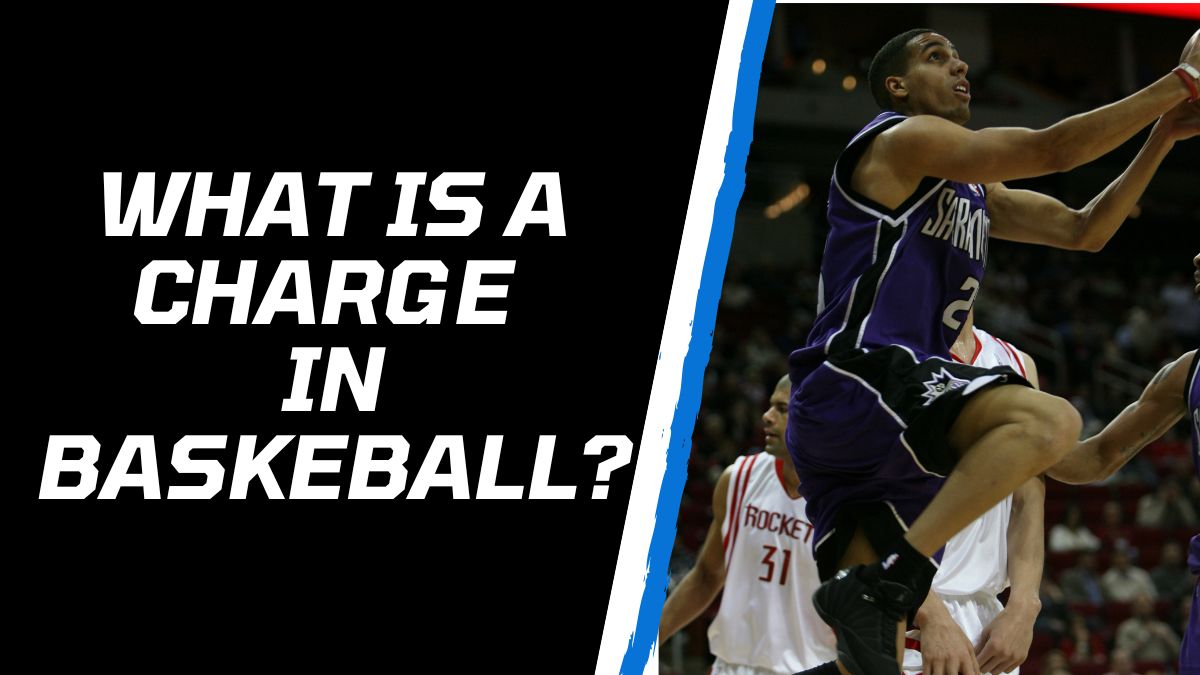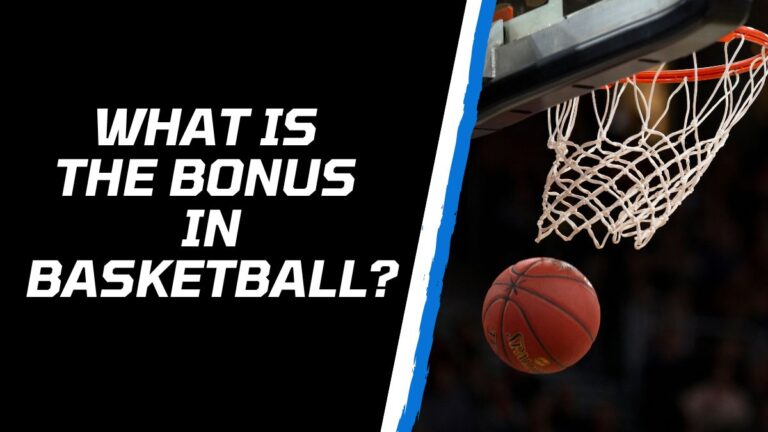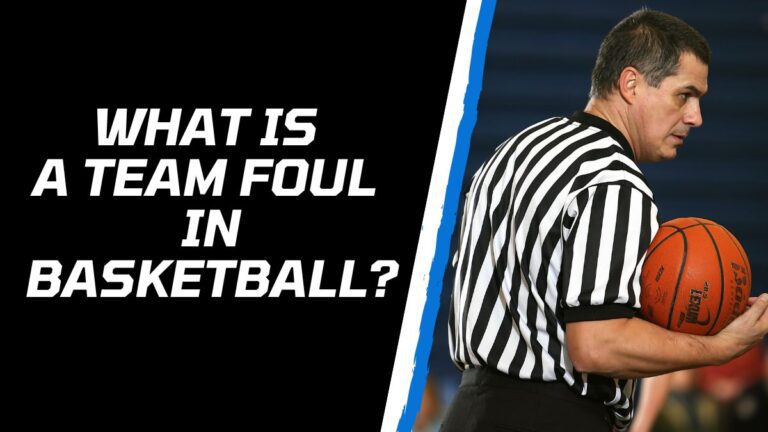What is a Charge in Basketball? Everything You Need to Know
A charge in basketball is an offensive foul that occurs when an offensive player runs into a defender who has established a legal guarding position. To be considered a charge, the defender must be in a stationary position with both feet on the ground and their torso facing the offensive player. The offensive player must also not be making a reasonable attempt to stop or change direction.
The Rules of a Charge

The key factors in determining a charge are:
- The defender must be in a legal guarding position. This means that the defender must have both feet on the ground and their torso facing the offensive player. They cannot be moving toward the offensive player or leaning into them.
- The defender must not be moving toward the offensive player. This means that the defender cannot be slid into position as contact is made.
- The offensive player must not be making a reasonable attempt to stop or change direction. This means that the offensive player cannot be running full speed into the defender. They must be slowing down or trying to change direction to avoid contact.
If all of these factors are met, then the referee will call a charge on the offensive player. The offensive player will be awarded a personal foul and the defensive team will get the ball.
Common Mistakes that Players Make when Committing a Charge

Here are some common mistakes that players make when committing a charge:
- Not being in a legal guarding position. This means that the defender’s feet must be planted and their torso must be facing the offensive player. If the defender is sliding or moving toward the offensive player, they are not in a legal guarding position.
- Moving towards the offensive player. This is a common mistake that defenders make when they are trying to draw a charge. If the defender moves towards the offensive player, they are no longer in a legal guarding position and the charge will not be called.
- Not giving the offensive player enough space to stop or change direction. The defender is not required to give the offensive player a wide berth, but they must give them enough space to stop or change direction if they see the defender coming. If the defender does not give the offensive player enough space, the charge will be called.
- Leaning into the offensive player. Defenders sometimes try to draw a charge by leaning into the offensive player. This is not a legal guarding position and the charge will not be called.
- Overselling the contact. Sometimes, defenders will try to sell the contact by throwing their arms up or making a big reaction. This is not necessary and can actually hurt their chances of getting the call.
It is important for defenders to be aware of these common mistakes so that they can avoid committing a charge. By understanding the rules of the charge and avoiding these mistakes, defenders can help to protect themselves from being called for a foul.
Charging Vs Blocking Foul

The key differences between a charge and a blocking foul are:
- The position of the defender. In a charge, the defender must be in a legal guarding position. This means that they must have both feet on the ground and their torso facing the offensive player. In a blocking foul, the defender does not need to be in a legal guarding position.
- The direction of the contact. In a charge, the offensive player must initiate the contact by running into the defender. In a blocking foul, the defender can initiate the contact.
- The location of the contact. In a charge, the contact must be made in the torso area. Contact to the arms or legs is not considered a charge. In a blocking foul, contact can be made to any part of the body.
If the defender is in a legal guarding position and the offensive player initiates the contact, then it is a charge. If the defender is not in a legal guarding position or the offensive player does not initiate the contact, then it is a blocking foul.
How do you get a charge in basketball?
Drawing a charge in basketball involves a defensive player positioning themselves in the path of an offensive player who is driving towards the basket. To successfully get a charge, you need to establish a legal guarding position with both feet on the floor and be outside the restricted area near the basket.
Anticipate the offensive player’s movement and absorb the contact on your torso while keeping your arms up and hands away from the offensive player. As the contact pushes you back, fall safely to the ground to demonstrate that the contact caused you to lose your balance.
It’s important to have established your position before the offensive player starts their drive, and the decision ultimately rests with the referees who judge whether you were in a legal guarding position and if the contact was initiated by the offensive player. Drawing a charge requires careful timing, positioning, and understanding of the rules, as well as the ability to anticipate the offensive player’s actions to successfully stop their drive and gain possession for your team.
How do you avoid a charge in basketball?

To avoid a charge in basketball, you can do the following:
- Be aware of your surroundings and the position of the defender.
- Don’t run into a defender who is in a legal guarding position.
- Make a reasonable attempt to stop or change direction if you see a defender coming towards you.
- Don’t lean into the defender.
- Don’t oversell the contact.
By following these tips, you can help to avoid committing a charge and protect yourself from being called for a foul.
What is the charge line in basketball?

The charge line in basketball is also known as the restricted area. It is a semi-circle area under the basket that is painted on the court. Defenders cannot draw charges in the restricted area unless the offensive player is in the air.
The restricted area was created to prevent defenders from sliding under offensive players as they drive to the basket. This can be a dangerous play, as it can lead to injuries. The restricted area gives offensive players a bit of space to land when they are shooting or driving to the basket.
The restricted area is four feet in radius, with its center located directly below the hoop. It is also known as the “no charge zone”.
In the NBA, the restricted area is smaller than in other levels of play. This is because the NBA wants to encourage more scoring and less defensive play in the paint.
If a defender is in the restricted area and draws a charge on an offensive player who is not in the air, the call will be a blocking foul instead of a charge. The offensive player will be awarded two free throws and the ball.
All in all, the charge line is an important part of the rules of basketball. It helps to protect offensive players from dangerous plays and encourages more scoring.
Why do people take Charge in basketball?
There are a few reasons why people take charges in basketball.
- To stop the offense. Taking a charge can be a very effective way to stop an offensive player from scoring. If the defender is in a legal guarding position and the offensive player runs into them, the offensive player will be called for a personal foul and the defensive team will get the ball.
- To get the offensive player in foul trouble. If an offensive player commits too many fouls, they will be disqualified from the game. By taking charges, defenders can help to put the offensive player in foul trouble and give their team an advantage.
- To earn points. If a defender is fouled while taking a charge, they will be awarded two free throws. If they make both free throws, they will score two points for their team.
- To make a defensive play. Taking a charge is a way for defenders to make a big defensive play and help their team win the game. It can be a very satisfying feeling to take charge and stop the offense from scoring.
Final Thoughts
In conclusion, a charge in basketball is an offensive foul that occurs when an offensive player runs into a defender who has established a legal guarding position. The charge is a judgment call by the referees, so there will be times when they disagree on whether or not a charge should be called. However, by understanding the rules of the charge and avoiding common mistakes, players can help to prevent themselves from being called for a charge.
Related Articles:







